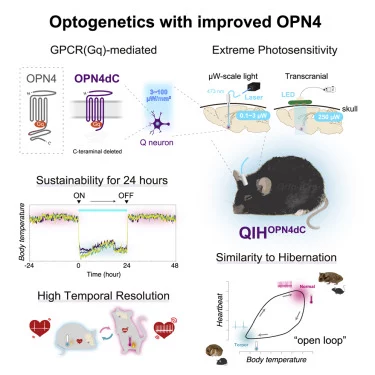Scientists at the University of California, Berkeley have just published a groundbreaking study in the field of neuroscience, with the ability to control one of the brain’s most mysterious states: REM sleep (Rapid Eye Movement)—the stage where we experience the most vivid dreams. Using an advanced technology called optogenetics, they created a “switch” that can turn the dream state on or off in mice with just a laser beam.

Optogenetics is a combination of genetic engineering and light, allowing scientists to activate or stop the activity of neurons by shining light on sensitive ion channels. In this latest study, the researchers implanted an optical switch into the brains of mice to control a region in the medulla, which is responsible for muscle paralysis during REM sleep. When these neurons were activated, the mice immediately entered REM sleep in less than 1 minute. When the switch was turned off, the mice could not enter REM sleep, no matter how much time passed.
“We have demonstrated that the medulla not only plays a role in muscle paralysis during REM sleep but also controls all aspects of REM sleep, including cortical activation, which makes the brain appear more awake in non-REM states,” said Professor Yang Dan, the lead researcher at the University of California, Berkeley, in a paper published in Nature in 2024.
“Controlling dreams is not just an interesting experiment but could also have potential applications in treating sleep disorders like insomnia, sleepwalking, or dream disorders in humans,” added Professor Yang Dan in the article published in Nature (2024).
This is a significant breakthrough in understanding the mechanisms behind sleep and dreaming. Previously, scientists only knew that REM sleep was linked to muscle paralysis to prevent acting out dreams, but the exact process and biological mechanisms driving this were unclear. With the use of optogenetics, researchers can now precisely control when the mice enter and exit REM sleep, opening up new possibilities for studying neural states and the mechanisms behind dreams.

One of the most notable aspects of this study is that it not only clarifies the role of the medulla in triggering REM sleep but also demonstrates the complex interaction between different areas of the brain during sleep cycles. This suggests that sleep and dreaming are not merely physiological responses but may serve important functions related to brain recovery, learning, and even problem-solving.
This work not only provides scientists with a powerful tool to explore dreams but also expands research potential in areas such as insomnia treatment and improving sleep quality. These new findings could change how we understand sleep and its impact on mental health, while also providing important insights for developing treatments for those facing sleep-related issues.
In the future, this technology may not only help us control the sleep of animals but also extend to humans, enabling us to manage crucial physiological factors that remain a mystery to this day.


HPX24h > Science > Turning Dreams On and Off with Brain-Control Technology: A Breakthrough in Sleep Researc
Tagged Articles
Can Pregnant Women Experience Temporary Memory Loss? The Secrets Behind Brain Changes During Pregnancy
Enhancing Memory with Brain Implants: A New Scientific Revolution
Direct Brain-to-Brain Communication via the Internet
Why Do Adult Brains Continue to Generate New Neurons?
Top Reads from This Category
Science
Why Cultured Meat Could Be the Future of the Food Industry
Science
Turning Snake Venom into Life-Saving Medicine: A Promising New Yeast Cell Technology
Science
NSF Job Cuts: Who Benefits and Who Bears the Consequences?
Science
Direct Brain-to-Brain Communication via the Internet
Science
Work 3.5 Days a Week and Live to 100: This Could Be Your Future
Science
The Science of Measuring Biological Age: New Discoveries About the Aging Process
Science
The Shocking Truth About Medical Bandages: Harmful Chemicals Absorbed Through Wounds
Discover New Topics
Science
Why Do Adult Brains Continue to Generate New Neurons?
Fitness
Exercise – The Key to Enhancing Your Quality of Life
Parenting Tips
How to Talk to Your Child About Smoking Issues
Science
Science Uncovers the Brain’s Process of Storing New Ideas
Science
Turning Dreams On and Off with Brain-Control Technology: A Breakthrough in Sleep Researc
Animals
The Stunning Image of a Cheetah in Action During Its Hunt
Health
Step-by-Step Guide to Safely Relieving Bloating in Children
Space
Tidal Heating: A New Challenge for Extraterrestrial Life
Animals
Secrets to Surviving Antarctic Freezing Cold Through RNA Editing
Healthy Eating
Vegan Diet: An Effective Weight Loss Solution or a Nutritional Challenge?
Parenting Tips
Discover How Japan’s Education System Creates Self-Disciplined, Responsible Students Without the Need for Pressure
Parenting Tips
Talking To Children About Sexuality: How To Make It Easier?
Space
The Relationship Between Star Formation and the Activity of Supermassive Black Holes